Mimetismo Vasculogénico: Mecanismo Alterno de Vascularización Adaptado por el Tumor
Resumen
El cáncer es una patología que surge como consecuencia de modificaciones genéticas, epigenéticas y del microambiente y es un problema de salud pública a nivel mundial por su alta frecuencia y mortalidad; siendo los más frecuentes el cáncer de mama, pulmón, colorrectal, próstata, hígado y estómago. La mortalidad que se presenta en los pacientes con estos tipos de cáncer está asociada con la presencia de metástasis, es decir, con la formación de tumores secundarios en órganos diferentes donde se originó el tumor primario. La vasculogénesis tumoral es uno de los sellos distintivos del cáncer y participa en el inicio, progresión tumoral y la metástasis de las células cancerosas. Aun cuando se ha descrito que la angiogénesis es el proceso más frecuente durante la vasculogénesis tumoral; recientemente se ha reportado que las células tumorales activan una vía alterna a la angiogénesis, llamada mimetismo vasculogénico. El mimetismo vasculogénico es un proceso vascular que realizan las células cancerosas y que es un mecanismo independiente de las células endoteliales que se desarrolla principalmente en tumores agresivos, en respuesta a la hipoxia y a la terapia anti-angiogénica, aunque actualmente los mecanismos subyacentes a este proceso no han sido dilucidados por completo. Sin embargo, se ha planteado que el microambiente tumoral, los componentes de la matriz extracelular, las células madre cancerosas y los mecanismos como la transición epitelial-mesenquimal tienen un papel importante en este mimetismo vasculogénico. En esta revisión reportamos las principales moléculas y mecanismos que participan en la vascularización del tumor y que promueven la progresión tumoral en cáncer, haciendo énfasis en el mimetismo vasculogénico.
Descargas
Citas
Akbarian, M., Bertassoni, L. E., & Tayebi, L. (2022). Biological aspects in controlling angiogenesis: current progress. Cellular and Molecular Life Sciences : CMLS, 79(7), 349.
https://doi.org/10.1007/s00018-022-04348-5
Angara, K., Borin, T. F., & Arbab, A. S. (2017). Vascular Mimicry: A Novel Neovascularization Mechanism Driving Anti-Angiogenic Therapy (AAT) Resistance in Glioblastoma. Translational Oncology, 10(4), 650–660.
https://doi.org/https://doi.org/10.1016/j.tranon.2017.04.007
Belotti, D., Pinessi, D., & Taraboletti, G. (2021). Alternative Vascularization Mechanisms in Tumor Resistance to Therapy. Cancers, 13(8). https://doi.org/10.3390/cancers13081912
Bielenberg, D. R., & Zetter, B. R. (2015). The Contribution of Angiogenesis to the Process of Metastasis. Cancer Journal (Sudbury, Mass.), 21(4), 267–273.
https://doi.org/10.1097/PPO.0000000000000138
Biserova, K., Jakovlevs, A., Uljanovs, R., & Strumfa, I. (2021). Cancer Stem Cells: Significance in Origin, Pathogenesis and Treatment of Glioblastoma. In Cells (Vol. 10, Issue 3).
https://doi.org/10.3390/cells10030621
Bray, F., Laversanne, M., Sung, H., Ferlay, J., Siegel, R. L., Soerjomataram, I., & Jemal, A. (2024). Global cancer statistics 2022: GLOBOCAN estimates of incidence and mortality worldwide for 36 cancers in 185 countries. CA: A Cancer Journal for Clinicians, 74(3), 229–263.
https://doi.org/10.3322/caac.21834
Brown, J. S., Amend, S. R., Austin, R. H., Gatenby, R. A., Hammarlund, E. U., & Pienta, K. J. (2023). Updating the Definition of Cancer. Molecular Cancer Research : MCR, 21(11), 1142–1147.
https://doi.org/10.1158/1541-7786.MCR-23-0411
Carrera-Aguado, I., Marcos-Zazo, L., Carrancio-Salán, P., Guerra-Paes, E., Sánchez-Juanes, F., & Muñoz-Félix, J. M. (2024). The Inhibition of Vessel Co-Option as an Emerging Strategy for Cancer Therapy. In International Journal of Molecular Sciences (Vol. 25, Issue 2).
https://doi.org/10.3390/ijms25020921
Cui, N., Hu, M., & Khalil, R. A. (2017). Biochemical and Biological Attributes of Matrix Metalloproteinases. Progress in Molecular Biology and Translational Science, 147, 1–73.
https://doi.org/10.1016/bs.pmbts.2017.02.005
Cuypers, A., Teuwen, L.-A., Bridgeman, V. L., de Rooij, L. P. M. H., Eelen, G., Dewerchin, M., Cantelmo, A. R., Kalucka, J., Bouché, A., Vinckier, S., Carton, A., Manderveld, A., Vermeulen, P. B., Reynolds, A. R., & Carmeliet, P. (2022). Generation of vessel co-option lung metastases mouse models for single-cell isolation of metastases-derived cells and endothelial cells. STAR Protocols, 3(4), 101691. https://doi.org/10.1016/j.xpro.2022.101691
Delgado-Bellido, D., Zamudio-Martínez, E., Fernández-Cortés, M., Herrera-Campos, A. B., Olmedo-Pelayo, J., Perez, C. J., Expósito, J., de Álava, E., Amaral, A. T., Valle, F. O., Diaz, A. G., & Oliver, F. J. (2023). VE-Cadherin modulates β-catenin/TCF-4 to enhance Vasculogenic Mimicry. Cell Death & Disease, 14(2), 135. https://doi.org/10.1038/s41419-023-05666-7
Elebiyo, T. C., Rotimi, D., Evbuomwan, I. O., Maimako, R. F., Iyobhebhe, M., Ojo, O. A., Oluba, O. M., & Adeyemi, O. S. (2022). Reassessing vascular endothelial growth factor (VEGF) in anti-angiogenic cancer therapy. Cancer Treatment and Research Communications, 32, 100620.
https://doi.org/https://doi.org/10.1016/j.ctarc.2022.100620
Emami Nejad, A., Najafgholian, S., Rostami, A., Sistani, A., Shojaeifar, S., Esparvarinha, M., Nedaeinia, R., Haghjooy Javanmard, S., Taherian, M., Ahmadlou, M., Salehi, R., Sadeghi, B., & Manian, M. (2021). The role of hypoxia in the tumor microenvironment and development of cancer stem cell: a novel approach to developing treatment. Cancer Cell International, 21(1), 62. https://doi.org/10.1186/s12935-020-01719-5
Fu, R., Du, W., Ding, Z., Wang, Y., Li, Y., Zhu, J., Zeng, Y., Zheng, Y., Liu, Z., & Huang, J. (2021). HIF-1α promoted vasculogenic mimicry formation in lung adenocarcinoma through NRP1 upregulation in the hypoxic tumor microenvironment. Cell Death & Disease, 12(4), 394.
https://doi.org/10.1038/s41419-021-03682-z
Gatenby, R. A., Avdieiev, S., Tsai, K. Y., & Brown, J. S. (2020). Integrating genetic and nongenetic drivers of somatic evolution during carcinogenesis: The biplane model. Evolutionary Applications, 13(7), 1651–1659. https://doi.org/10.1111/eva.12973
Gebauer, F., Struck, L., Tachezy, M., Vashist, Y., Wicklein, D., Schumacher, U., Izbicki, J. R., & Bockhorn, M. (2014). Serum EpCAM expression in pancreatic cancer. Anticancer Research, 34(9), 4741–4746.
Gerstberger, S., Jiang, Q., & Ganesh, K. (2023). Metastasis. Cell, 186(8), 1564–1579.
https://doi.org/10.1016/j.cell.2023.03.003
Gong, W., Sun, B., Zhao, X., Zhang, D., Sun, J., Liu, T., Gu, Q., Dong, X., Liu, F., Wang, Y., Lin, X., & Li, Y. (2016). Nodal signaling promotes vasculogenic mimicry formation in breast cancer via the Smad2/3 pathway. Oncotarget, 7(43), 70152–70167.
https://doi.org/10.18632/oncotarget.12161
Grimsley-Myers, C. M., Isaacson, R. H., Cadwell, C. M., Campos, J., Hernandes, M. S., Myers, K. R., Seo, T., Giang, W., Griendling, K. K., & Kowalczyk, A. P. (2020). VE-cadherin endocytosis controls vascular integrity and patterning during development. The Journal of Cell Biology, 219(5). https://doi.org/10.1083/jcb.201909081
Haiaty, S., Rashidi, M.-R., Akbarzadeh, M., Maroufi, N. F., Yousefi, B., & Nouri, M. (2020). Targeting vasculogenic mimicry by phytochemicals: A potential opportunity for cancer therapy. IUBMB Life, 72(5), 825–841. https://doi.org/10.1002/iub.2233
Han, D.-S., Lee, H.-J., & Lee, E.-O. (2022). Resveratrol suppresses serum-induced vasculogenic mimicry through impairing the EphA2/twist-VE-cadherin/AKT pathway in human prostate cancer PC-3 cells. Scientific Reports, 12(1), 20125. https://doi.org/10.1038/s41598-022-24414-z
Han, J., Won, M., Kim, J. H., Jung, E., Min, K., Jangili, P., & Kim, J. S. (2020). Cancer stem cell-targeted bio-imaging and chemotherapeutic perspective. Chemical Society Reviews, 49(22), 7856–7878. https://doi.org/10.1039/d0cs00379d
Hanahan, D. (2022). Hallmarks of Cancer: New Dimensions. Cancer Discovery, 12(1), 31–46.
https://doi.org/10.1158/2159-8290.CD-21-1059
Hendrix, M. J., Seftor, E. A., Meltzer, P. S., Gardner, L. M., Hess, A. R., Kirschmann, D. A., Schatteman, G. C., & Seftor, R. E. (2001). Expression and functional significance of VE-cadherin in aggressive human melanoma cells: role in vasculogenic mimicry. Proceedings of the National Academy of Sciences of the United States of America, 98(14), 8018–8023.
https://doi.org/10.1073/pnas.131209798
Herrera-Vargas, A. K., García-Rodríguez, E., Olea-Flores, M., Mendoza-Catalán, M. A., Flores-Alfaro, E., & Navarro-Tito, N. (2021). Pro-angiogenic activity and vasculogenic mimicry in the tumor microenvironment by leptin in cancer. Cytokine & Growth Factor Reviews, 62, 23–41.
https://doi.org/https://doi.org/10.1016/j.cytogfr.2021.10.006
Hess, A. R., Seftor, E. A., Gruman, L. M., Kinch, M. S., Seftor, R. E. B., & Hendrix, M. J. C. (2006). VE-cadherin regulates EphA2 in aggressive melanoma cells through a novel signaling pathway: Implications for vasculogenic mimicry. Cancer Biology & Therapy, 5(2), 228–233.
https://doi.org/10.4161/cbt.5.2.2510
Hu, K., & Olsen, B. R. (2016). The roles of vascular endothelial growth factor in bone repair and regeneration. Bone, 91, 30–38. https://doi.org/https://doi.org/10.1016/j.bone.2016.06.013
Jeong, J.-H., Ojha, U., & Lee, Y. M. (2021). Pathological angiogenesis and inflammation in tissues. Archives of Pharmacal Research, 44(1), 1–15. https://doi.org/10.1007/s12272-020-01287-2
Jiang, X., Wang, J., Deng, X., Xiong, F., Zhang, S., Gong, Z., Li, X., Cao, K., Deng, H., He, Y., Liao, Q., Xiang, B., Zhou, M., Guo, C., Zeng, Z., Li, G., Li, X., & Xiong, W. (2020). The role of microenvironment in tumor angiogenesis. Journal of Experimental & Clinical Cancer Research : CR, 39(1), 204. https://doi.org/10.1186/s13046-020-01709-5
Jonckheere, S., Adams, J., De Groote, D., Campbell, K., Berx, G., & Goossens, S. (2022). Epithelial-Mesenchymal Transition (EMT) as a Therapeutic Target. Cells, Tissues, Organs, 211(2), 157–182. https://doi.org/10.1159/000512218
Kim, S., Bruyas, A., Pan, C.-C., Stahl, A. M., & Yang, Y. (2019). Vascularized Tissue Regenerative Engineering Using 3D Bioprinting Technology (R. B. T.-E. of B. E. Narayan (ed.); pp. 696–706). Elsevier. https://doi.org/https://doi.org/10.1016/B978-0-12-801238-3.99902-1
Kirschmann, D. A., Seftor, E. A., Hardy, K. M., Seftor, R. E. B., & Hendrix, M. J. C. (2012). Molecular pathways: vasculogenic mimicry in tumor cells: diagnostic and therapeutic implications. Clinical Cancer Research : An Official Journal of the American Association for Cancer Research, 18(10), 2726–2732. https://doi.org/10.1158/1078-0432.CCR-11-3237
Kolte, D., McClung, J. A., & Aronow, W. S. (2016). Chapter 6 - Vasculogenesis and Angiogenesis (W. S. Aronow & J. A. B. T.-T. R. in C. A. D. McClung (eds.); pp. 49–65). Academic Press.
https://doi.org/https://doi.org/10.1016/B978-0-12-802385-3.00006-1
Kuczynski, E. A., & Reynolds, A. R. (2020). Vessel co-option and resistance to anti-angiogenic therapy. Angiogenesis, 23(1), 55–74. https://doi.org/10.1007/s10456-019-09698-6
Kuczynski, E. A., Vermeulen, P. B., Pezzella, F., Kerbel, R. S., & Reynolds, A. R. (2019). Vessel co-option in cancer. Nature Reviews. Clinical Oncology, 16(8), 469–493.
https://doi.org/10.1038/s41571-019-0181-9
Kut, C., Mac Gabhann, F., & Popel, A. S. (2007). Where is VEGF in the body? A meta-analysis of VEGF distribution in cancer. British Journal of Cancer, 97(7), 978–985.
https://doi.org/10.1038/sj.bjc.6603923
Laronha, H., & Caldeira, J. (2020). Structure and Function of Human Matrix Metalloproteinases. In Cells (Vol. 9, Issue 5). https://doi.org/10.3390/cells9051076
Latacz, E., Caspani, E., Barnhill, R., Lugassy, C., Verhoef, C., Grünhagen, D., Van Laere, S., Fernández Moro, C., Gerling, M., Dirix, M., Dirix, L. Y., & Vermeulen, P. B. (2020). Pathological features of vessel co-option versus sprouting angiogenesis. Angiogenesis, 23(1), 43–54.
https://doi.org/10.1007/s10456-019-09690-0
Lee, H. J., Hong, Y. J., & Kim, M. (2021). Angiogenesis in Chronic Inflammatory Skin Disorders. In International Journal of Molecular Sciences (Vol. 22, Issue 21).
https://doi.org/10.3390/ijms222112035
Li, Y., Sun, B., Zhao, X., Wang, X., Zhang, D., Gu, Q., & Liu, T. (2017). MMP-2 and MMP-13 affect vasculogenic mimicry formation in large cell lung cancer. Journal of Cellular and Molecular Medicine, 21(12), 3741–3751. https://doi.org/10.1111/jcmm.13283
Liu, T. J., Sun, B. C., Zhao, X. L., Zhao, X. M., Sun, T., Gu, Q., Yao, Z., Dong, X. Y., Zhao, N., & Liu, N. (2013). CD133+ cells with cancer stem cell characteristics associates with vasculogenic mimicry in triple-negative breast cancer. Oncogene, 32(5), 544–553.
https://doi.org/10.1038/onc.2012.85
Liu, X., Liang, H., Fang, H., Xiao, J., Yang, C., Zhou, Z., Feng, J., & Chen, C. (2023). Angiopoietin-1 promotes triple-negative breast cancer cell proliferation by upregulating carboxypeptidase A4. Acta Biochimica et Biophysica Sinica, 55(9), 1487–1495.
https://doi.org/10.3724/abbs.2023082
Lopes-Coelho, F., Martins, F., Pereira, S. A., & Serpa, J. (2021). Anti-Angiogenic Therapy: Current Challenges and Future Perspectives. In International Journal of Molecular Sciences (Vol. 22, Issue 7). https://doi.org/10.3390/ijms22073765
López-Camarillo, C., Ruiz-García, E., Starling, N., & Marchat, L. A. (2020). Editorial: Neovascularization, Angiogenesis and Vasculogenic Mimicry in Cancer. In Frontiers in oncology (Vol. 10, p. 1140). https://doi.org/10.3389/fonc.2020.01140
Luo, Q., Wang, J., Zhao, W., Peng, Z., Liu, X., Li, B., Zhang, H., Shan, B., Zhang, C., & Duan, C. (2020). Vasculogenic mimicry in carcinogenesis and clinical applications. Journal of Hematology & Oncology, 13(1), 19. https://doi.org/10.1186/s13045-020-00858-6
Mabeta, P., & Steenkamp, V. (2022). The VEGF/VEGFR Axis Revisited: Implications for Cancer Therapy. In International Journal of Molecular Sciences (Vol. 23, Issue 24).
https://doi.org/10.3390/ijms232415585
Makena, M. R., Ranjan, A., Thirumala, V., & Reddy, A. P. (2020). Cancer stem cells: Road to therapeutic resistance and strategies to overcome resistance. Biochimica et Biophysica Acta. Molecular Basis of Disease, 1866(4), 165339. https://doi.org/10.1016/j.bbadis.2018.11.015
Markiewski, M. M., Daugherity, E., Reese, B., & Karbowniczek, M. (2020). The Role of Complement in Angiogenesis. Antibodies (Basel, Switzerland), 9(4). https://doi.org/10.3390/antib9040067
Niland, S., Riscanevo, A. X., & Eble, J. A. (2021). Matrix Metalloproteinases Shape the Tumor Microenvironment in Cancer Progression. International Journal of Molecular Sciences, 23(1). https://doi.org/10.3390/ijms23010146
Peluzzo, A. M., & Autieri, M. V. (2022). Challenging the Paradigm: Anti-Inflammatory Interleukins and Angiogenesis. Cells, 11(3). https://doi.org/10.3390/cells11030587
Qie, S., Sun, B.-C., Zhao, X.-L., Zhang, S.-W., Sun, T., Gao, S.-Y., & Wang, X.-H. (2009). [Correlation between expressions of matrix metalloproteinase-2 & 9 and vasculogenic mimicry in gastrointestinal stromal tumors]. Zhonghua yi xue za zhi, 89(16), 1106–1109.
Ribatti, D., Annese, T., & Tamma, R. (2023). Vascular co-option in resistance to anti-angiogenic therapy. Frontiers in Oncology, 13, 1323350. https://doi.org/10.3389/fonc.2023.1323350
Ribatti, D., & Pezzella, F. (2021). Overview on the Different Patterns of Tumor Vascularization. Cells, 10(3). https://doi.org/10.3390/cells10030639
Ribatti, D., Tamma, R., & Annese, T. (2020). Epithelial-Mesenchymal Transition in Cancer: A Historical Overview. Translational Oncology, 13(6), 100773.
https://doi.org/https://doi.org/10.1016/j.tranon.2020.100773
Rochefort, P., Chabaud, S., Pierga, J.-Y., Tredan, O., Brain, E., Bidard, F.-C., Schiffler, C., Polena, H., Khalil-Mgharbel, A., Vilgrain, I., & Bachelot, T. (2017). Soluble VE-cadherin in metastatic breast cancer: an independent prognostic factor for both progression-free survival and overall survival. British Journal of Cancer, 116(3), 356–361. https://doi.org/10.1038/bjc.2016.427
Santiago Flores, C. A., Solís Peralta, F. M., & Huerta Patraca, G. A. (2024). El Autorretrato como Estrategia Socioemocional para Fortalecer el Autoconcepto en Alumnos de Bachillerato. Estudios Y Perspectivas Revista Científica Y Académica , 4(2), 136–154. https://doi.org/10.61384/r.c.a.v4i2.204
Nanguce López , M., & Sierra Ramírez, J. A. (2024). Funcionalidad familiar y depresión en adultos mayores con diabetes. Revista Científica De Salud Y Desarrollo Humano, 5(1), 378–391. https://doi.org/10.61368/r.s.d.h.v5i1.101
Tovar Cuevas, J. R., Portilla-Yela, J., Burbano Pantoja, V. M., & Valdivieso Miranda, M. A. (2024). Factores asociados al desempeño en el primer curso de matemáticas para estudiantes universitarios. Emergentes - Revista Científica, 4(1), 316–349. https://doi.org/10.60112/erc.v4i1.110
Ruiz Díaz Benítez, J. R. (2023). Diseño de una Arquitectura de Referencia en la Logística de Abastecimiento Inteligente de Almacenes mediante el uso de Tecnologías de la Industria 4.0. Caso Almacenes retail de la Ciudad de Pilar. Revista Veritas De Difusão Científica, 4(2), 55–70. https://doi.org/10.61616/rvdc.v4i2.46
Fernández C., F. (2024). Determinación De Erodabilidad En Áreas De Influencia Cuenca Poopo Región Andina De Bolivia. Horizonte Académico, 4(4), 63–78. Recuperado a partir de https://horizonteacademico.org/index.php/horizonte/article/view/19
Medina Nolasco, E. K., Mendoza Buleje, E. R., Vilca Apaza, G. R., Mamani Fernández, N. N., & Alfaro Campos, K. (2024). Tamizaje de cáncer de cuello uterino en mujeres de una región Andina del Perú. Arandu UTIC, 11(1), 50–63. https://doi.org/10.69639/arandu.v11i1.177
Da Silva Santos , F., & López Vargas , R. (2020). Efecto del Estrés en la Función Inmune en Pacientes con Enfermedades Autoinmunes: una Revisión de Estudios Latinoamericanos. Revista Científica De Salud Y Desarrollo Humano, 1(1), 46–59. https://doi.org/10.61368/r.s.d.h.v1i1.9
Saha, D., Mitra, D., Alam, N., Sen, S., Mustafi, S. M., Majumder, P. K., Majumder, B., & Murmu, N. (2023). Lupeol and Paclitaxel cooperate in hindering hypoxia induced vasculogenic mimicry via suppression of HIF-1α-EphA2-Laminin-5γ2 network in human oral cancer. Journal of Cell Communication and Signaling, 17(3), 591–608. https://doi.org/10.1007/s12079-022-00693-z
Saito, T., Muragaki, Y., Komori, A., Nitta, M., Tsuzuki, S., Koriyama, S., Ro, B., & Kawamata, T. (2023). Increase in serum vimentin levels in patients with glioma and its correlation with prognosis of patients with glioblastoma. Neurosurgical Review, 46(1), 202. https://doi.org/10.1007/s10143-023-02112-2
Skerenova, M., Mikulova, V., Capoun, O., Zima, T., & Tesarova, P. (2017). Circulating tumor cells and serum levels of MMP-2, MMP-9 and VEGF as markers of the metastatic process in patients with high risk of metastatic progression. Biomedical Papers of the Medical Faculty of the University Palacky, Olomouc, Czechoslovakia, 161(3), 272–280.
https://doi.org/10.5507/bp.2017.022
Sørensen, B. S., & Horsman, M. R. (2020). Tumor Hypoxia: Impact on Radiation Therapy and Molecular Pathways. Frontiers in Oncology, 10, 562. https://doi.org/10.3389/fonc.2020.00562
Sulkowska, M., Famulski, W., Wincewicz, A., Moniuszko, T., Kedra, B., Koda, M., Zalewski, B., Baltaziak, M., & Sulkowski, S. (2006). Levels of VE-cadherin increase independently of VEGF in preoperative sera of patients with colorectal cancer. Tumori, 92(1), 67–71.
https://doi.org/10.1177/030089160609200111
Sun, B., Zhang, D., Zhao, N., & Zhao, X. (2017). Epithelial-to-endothelial transition and cancer stem cells: two cornerstones of vasculogenic mimicry in malignant tumors. Oncotarget, 8(18), 30502–30510. https://doi.org/10.18632/oncotarget.8461
Sun, H., Yao, N., Cheng, S., Li, L., Liu, S., Yang, Z., Shang, G., Zhang, D., & Yao, Z. (2019). Cancer stem-like cells directly participate in vasculogenic mimicry channels in triple-negative breast cancer. Cancer Biology & Medicine, 16(2), 299–311. https://doi.org/10.20892/j.issn.2095-3941.2018.0209
Sun, H., Zhang, D., Yao, Z., Lin, X., Liu, J., Gu, Q., Dong, X., Liu, F., Wang, Y., Yao, N., Cheng, S., Li, L., & Sun, S. (2017). Anti-angiogenic treatment promotes triple-negative breast cancer invasion via vasculogenic mimicry. Cancer Biology & Therapy, 18(4), 205–213.
https://doi.org/10.1080/15384047.2017.1294288
Sun, S., Poon, R. T. P., Lee, N. P., Yeung, C., Chan, K. L., Ng, I. O. L., Day, P. J. R., & Luk, J. M. (2010). Proteomics of hepatocellular carcinoma: serum vimentin as a surrogate marker for small tumors (
https://doi.org/10.1021/pr901085z
Sung, H., Ferlay, J., Siegel, R. L., Laversanne, M., Soerjomataram, I., Jemal, A., & Bray, F. (2021). Global Cancer Statistics 2020: GLOBOCAN Estimates of Incidence and Mortality Worldwide for 36 Cancers in 185 Countries. CA: A Cancer Journal for Clinicians, 71(3), 209–249. https://doi.org/10.3322/caac.21660
Thomas, M., & Augustin, H. G. (2009). The role of the Angiopoietins in vascular morphogenesis. Angiogenesis, 12(2), 125–137. https://doi.org/10.1007/s10456-009-9147-3
Torres, A., Pac-Sosińska, M., Wiktor, K., Paszkowski, T., Maciejewski, R., & Torres, K. (2019). CD44, TGM2 and EpCAM as novel plasma markers in endometrial cancer diagnosis. BMC Cancer, 19(1), 401. https://doi.org/10.1186/s12885-019-5556-x
Treps, L., Faure, S., & Clere, N. (2021). Vasculogenic mimicry, a complex and devious process favoring tumorigenesis - Interest in making it a therapeutic target. Pharmacology & Therapeutics, 223, 107805. https://doi.org/10.1016/j.pharmthera.2021.107805
Tutton, M. G., George, M. L., Eccles, S. A., Burton, S., Swift, R. I., & Abulafi, A. M. (2003). Use of plasma MMP-2 and MMP-9 levels as a surrogate for tumour expression in colorectal cancer patients. International Journal of Cancer, 107(4), 541–550. https://doi.org/10.1002/ijc.11436
Wang, H.-F., Wang, S.-S., Zheng, M., Dai, L.-L., Wang, K., Gao, X.-L., Cao, M.-X., Yu, X.-H., Pang, X., Zhang, M., Wu, J.-B., Wu, J.-S., Yang, X., Tang, Y.-J., Chen, Y., Tang, Y.-L., & Liang, X.-H. (2019). Hypoxia promotes vasculogenic mimicry formation by vascular endothelial growth factor A mediating epithelial-mesenchymal transition in salivary adenoid cystic carcinoma. Cell Proliferation, 52(3), e12600. https://doi.org/10.1111/cpr.12600
Wang, H., Huang, B., Li, B. M., Cao, K. Y., Mo, C. Q., Jiang, S. J., Pan, J. C., Wang, Z. R., Lin, H. Y., Wang, D. H., & Qiu, S. P. (2018). ZEB1-mediated vasculogenic mimicry formation associates with epithelial-mesenchymal transition and cancer stem cell phenotypes in prostate cancer. Journal of Cellular and Molecular Medicine, 22(8), 3768–3781.
https://doi.org/10.1111/jcmm.13637
Wang, J., Sun, T., Zhao, X., Zhang, S., Gu, Q., Wang, X., Zhao, N., Qie, S., & Sun, B. (2008). Functional significance of VEGF-a in human ovarian carcinoma: Role in vasculogenic mimicry. Cancer Biology & Therapy, 7(5), 758–766. https://doi.org/10.4161/cbt.7.5.5765
Wei, X., Chen, Y., Jiang, X., Peng, M., Liu, Y., Mo, Y., Ren, D., Hua, Y., Yu, B., Zhou, Y., Liao, Q., Wang, H., Xiang, B., Zhou, M., Li, X., Li, G., Li, Y., Xiong, W., & Zeng, Z. (2021). Mechanisms of vasculogenic mimicry in hypoxic tumor microenvironments. Molecular Cancer, 20(1), 7. https://doi.org/10.1186/s12943-020-01288-1
Wu, C.-Y., Wu, M.-S., Chiang, E.-P., Chen, Y.-J., Chen, C.-J., Chi, N.-H., Shih, Y.-T., Chen, G.-H., & Lin, J.-T. (2007). Plasma matrix metalloproteinase-9 level is better than serum matrix metalloproteinase-9 level to predict gastric cancer evolution. Clinical Cancer Research : An Official Journal of the American Association for Cancer Research, 13(7), 2054–2060. https://doi.org/10.1158/1078-0432.CCR-06-2299
Yang, G., Mahadik, B., Choi, J. Y., & Fisher, J. P. (2020). Vascularization in tissue engineering: fundamentals and state-of-art. Progress in Biomedical Engineering (Bristol, England), 2(1). https://doi.org/10.1088/2516-1091/ab5637
Yuan, Y., Geng, B., Xu, X., Zhao, H., Bai, J., Dou, Z., Jia, S., Yu, X., & Luo, W. (2022). Dual VEGF/PDGF knockdown suppresses vasculogenic mimicry formation in choroidal melanoma cells via the Wnt5a/β-catenin/AKT signaling pathway. Acta Histochemica, 124(1), 151842. https://doi.org/https://doi.org/10.1016/j.acthis.2021.151842
Zhang, L., Wu, H., Zhang, Y., Xiao, X., Chu, F., & Zhang, L. (2022). Induction of lncRNA NORAD accounts for hypoxia-induced chemoresistance and vasculogenic mimicry in colorectal cancer by sponging the miR-495-3p/ hypoxia-inducible factor-1α (HIF-1α). Bioengineered, 13(1), 950–962. https://doi.org/10.1080/21655979.2021.2015530
Zhang, X., Zhang, J., Zhou, H., Fan, G., & Li, Q. (2019). Molecular Mechanisms and Anticancer Therapeutic Strategies in Vasculogenic Mimicry. Journal of Cancer, 10(25), 6327–6340. https://doi.org/10.7150/jca.34171
Zhang, X., Zhang, J., Zhou, H., Liu, G., & Li, Q. (2020). Rho kinase mediates transforming growth factor-β1-induced vasculogenic mimicry formation: involvement of the epithelial–mesenchymal transition and cancer stemness activity. Acta Biochimica et Biophysica Sinica, 52(4), 411–420. https://doi.org/10.1093/abbs/gmaa014
Zhang, Y., Wang, S., & Dudley, A. C. (2020). Models and molecular mechanisms of blood vessel co-option by cancer cells. Angiogenesis, 23(1), 17–25. https://doi.org/10.1007/s10456-019-09684-y
Zuazo-Gaztelu, I., & Casanovas, O. (2019). Mechanisms of Tumor Angiogenesis BT - Tumor Angiogenesis: A Key Target for Cancer Therapy (D. Marmé (ed.); pp. 3–31). Springer International Publishing. https://doi.org/10.1007/978-3-319-33673-2_1
Derechos de autor 2025 Ana Karen Herrera Vargas , Miguel Ángel Barrera López, Lenin Martínez Gómez , Ana Elvira Zacapala Gomez, Osiris Hilario Fausto, Carlos Anibal Martinez Fierro, Carlos César Patiño Morales, César Sotelo Leyva, Miguel Angel Mendoza Catalán , Napoleón Navarro Tito

Esta obra está bajo licencia internacional Creative Commons Reconocimiento 4.0.







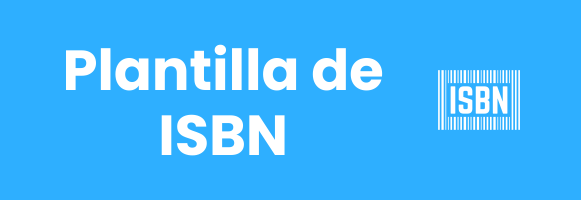



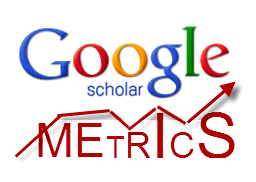

.png)
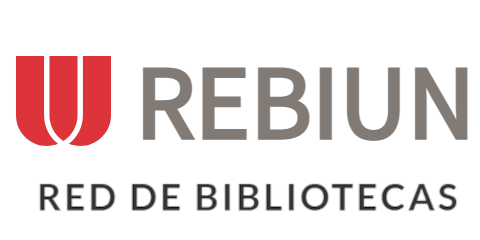







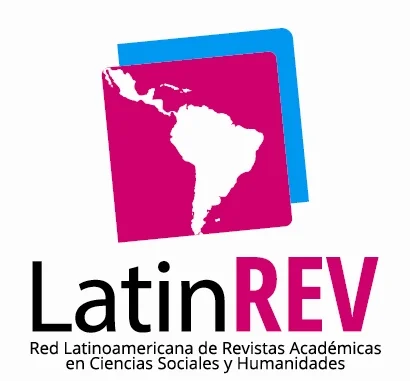

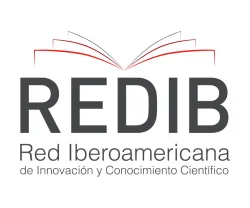


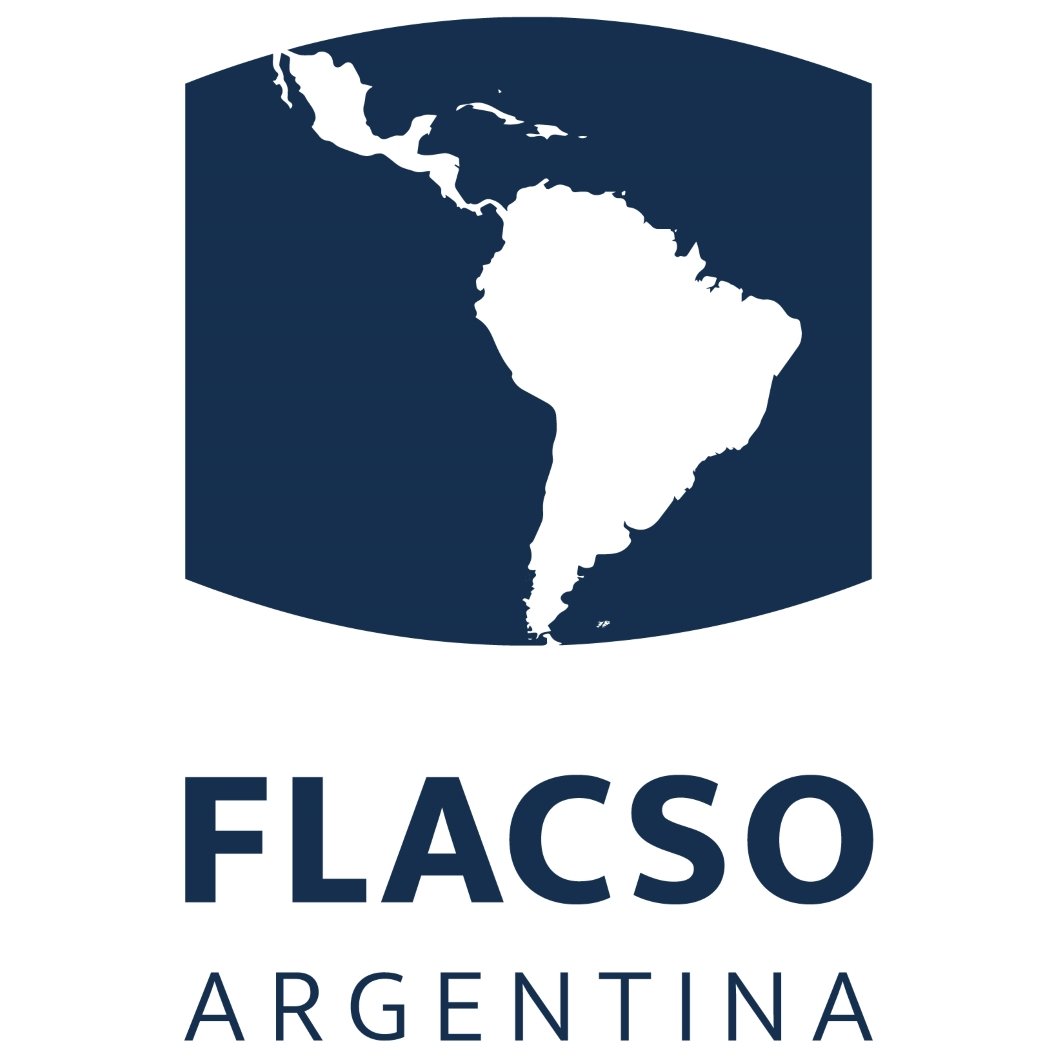
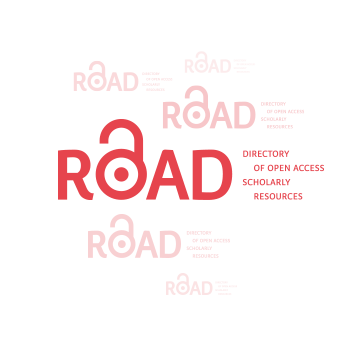
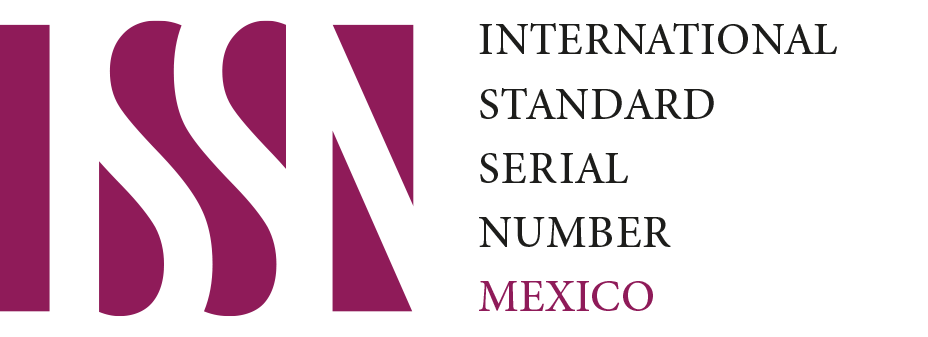
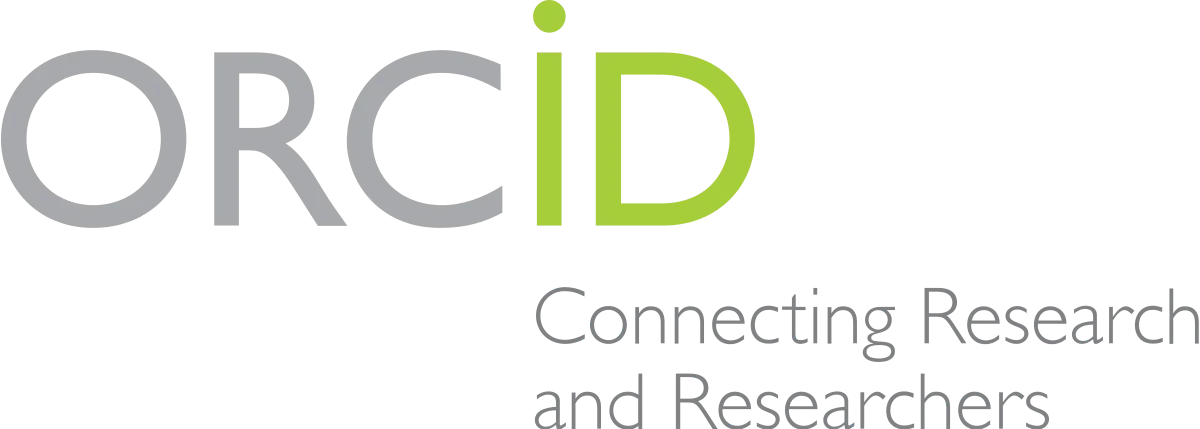



.png)
1.png)


